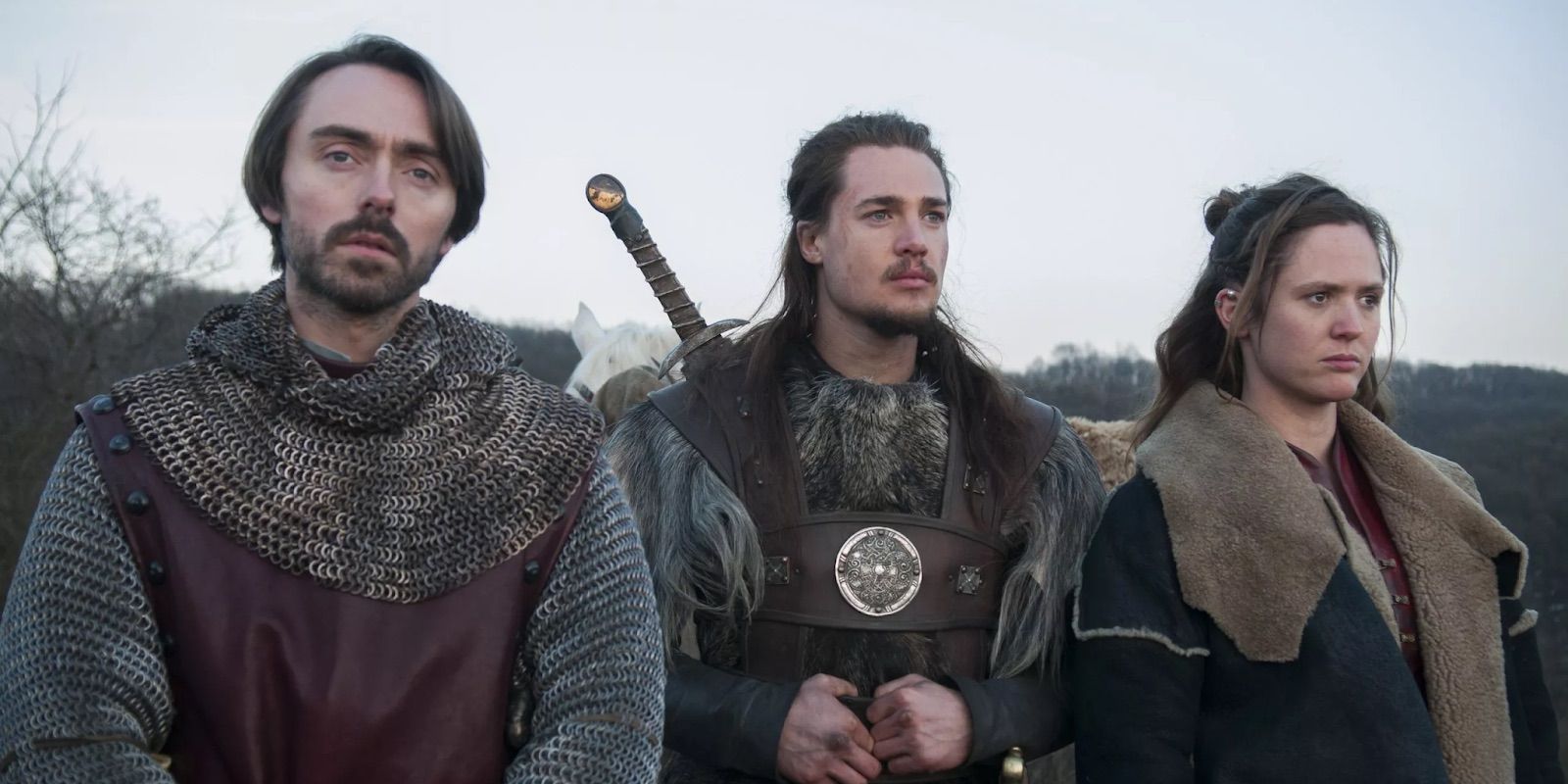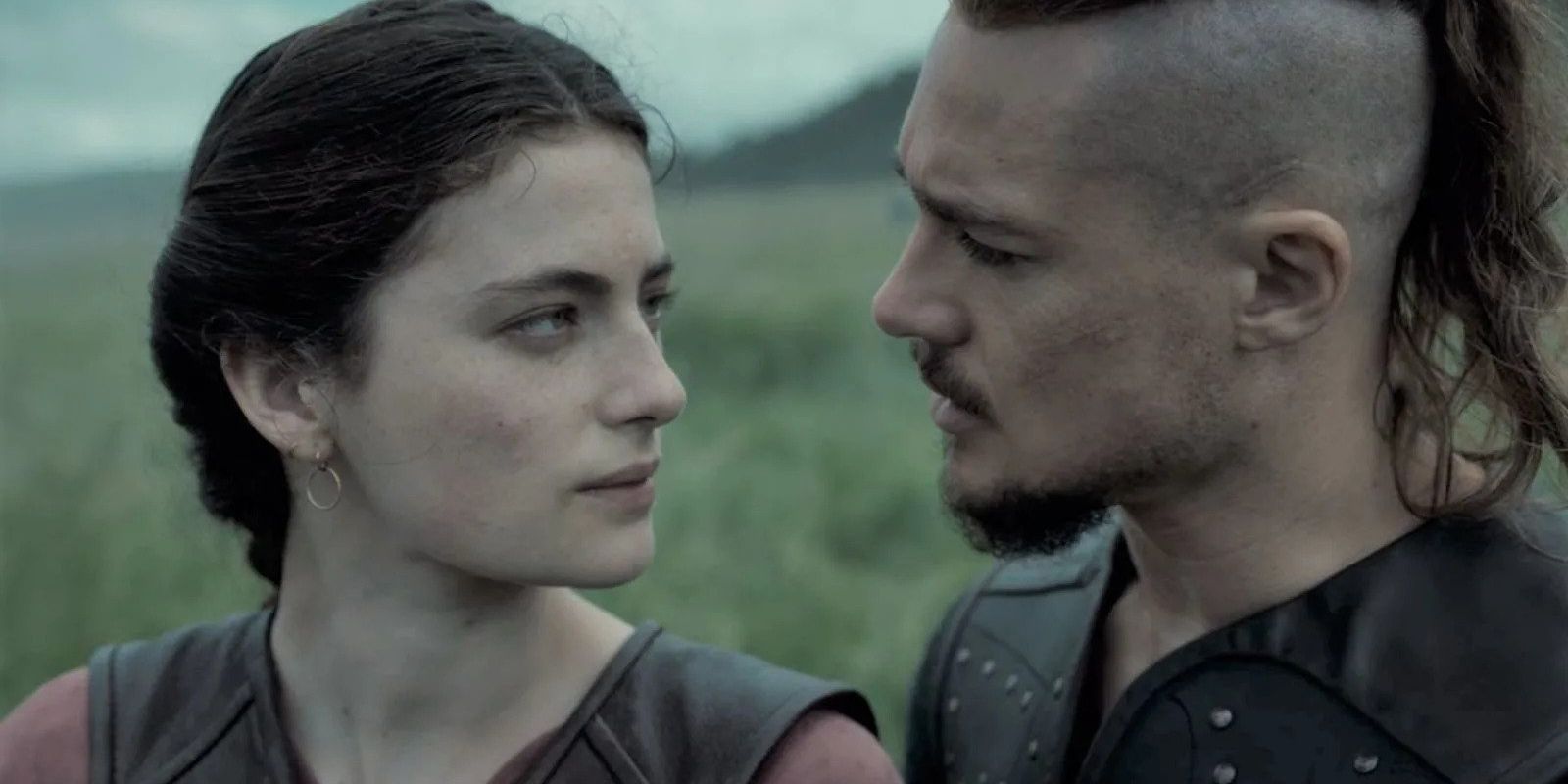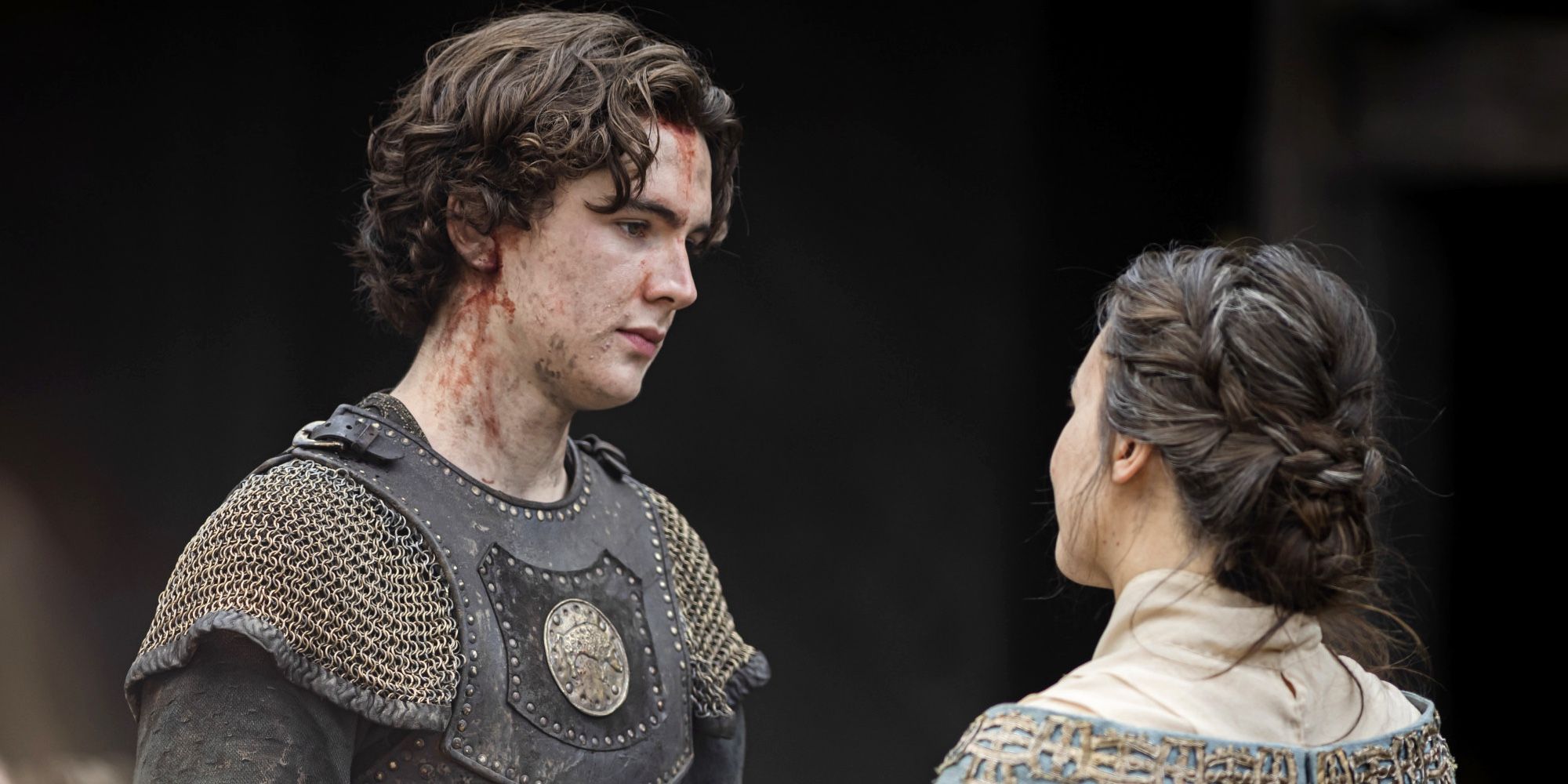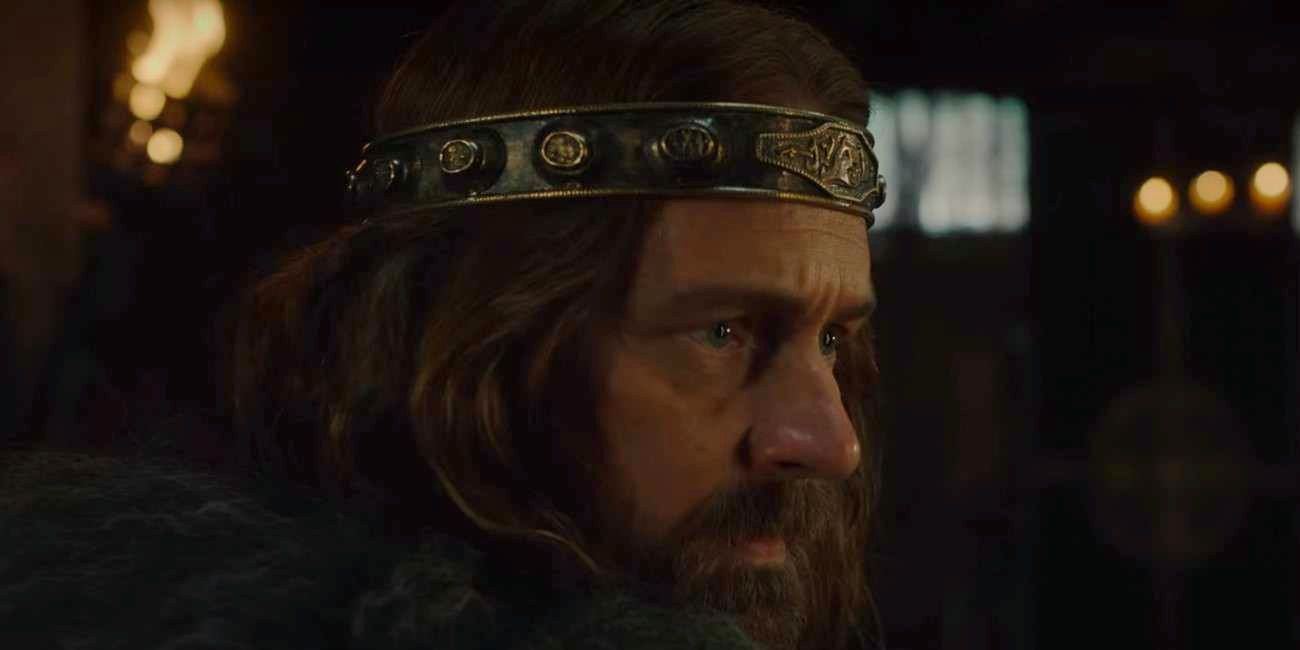The Last Kingdom is based on real historical events and figures from 10th century England, but it made several changes – here are the biggest ones.
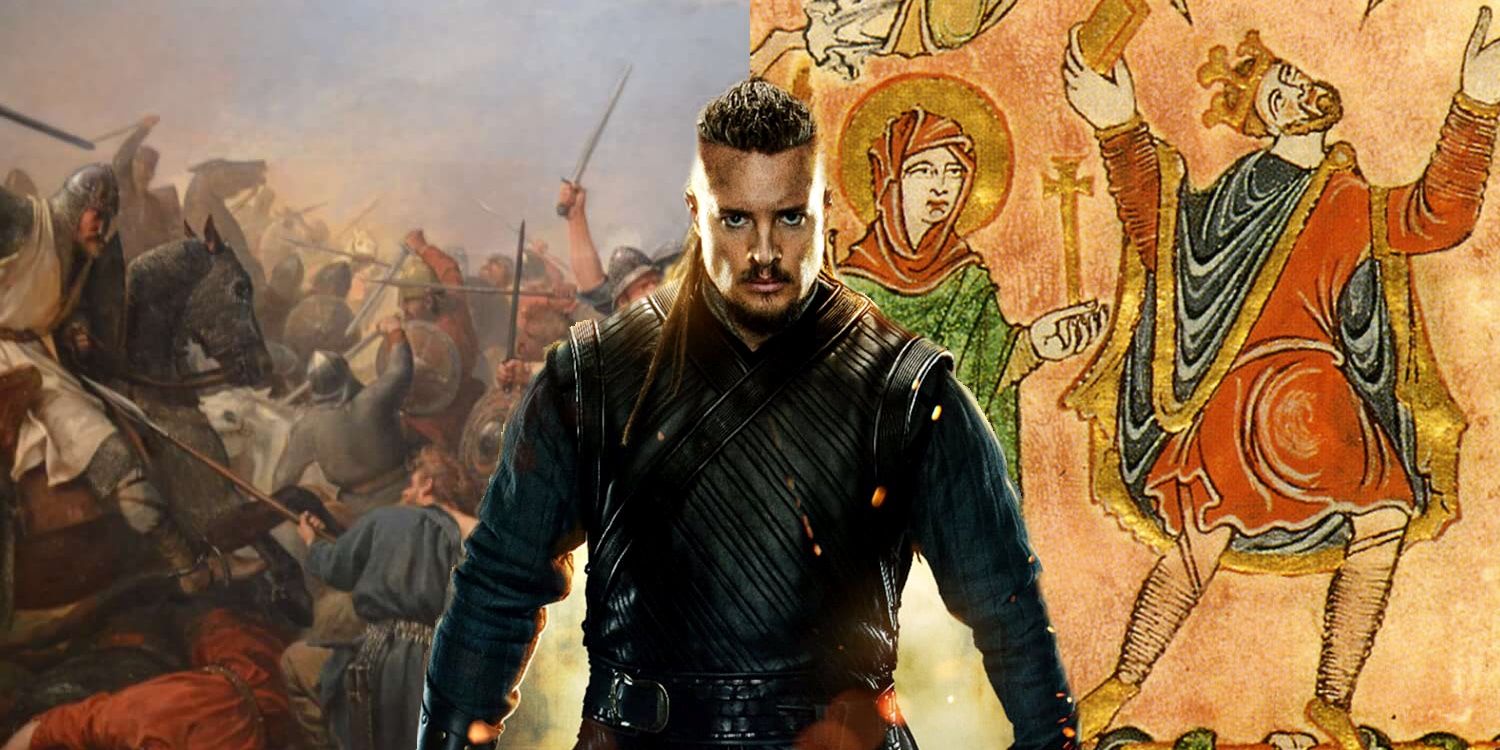
The Last Kingdom season 5 takes place in 10th-century England, during the rule of Edward the Elder, but the show is not afraid to make changes from real history. Netflix’s show is an adaptation of The Saxon Stories, a series of novels by Bernard Cornwell. The Last Kingdom was originally aired by British broadcaster BBC before Netflix acquired the show in 2018 and produced the final three seasons. Although season 5 is the show’s last, the story will conclude in the Netflix film Seven Kings Must Die.
Like Vikings before it, The Last Kingdom is a historical drama based on historical events and people of the Viking Age. Throughout the season, several historical events unfold, such as the death of Lady Æthelflæd of Mercia in 918 AD. It follows the story of Uhtred of Bebbanburg (Alexander Dreymon) throughout several decades of English history. During The Last Kingdom‘s five seasons, Uhtred serves King Alfred the Great and later his son, Edward the Elder. Like these two kings, many characters in the show have historical counterparts. Nonetheless, The Last Kingdom’s historical accuracy is not always on target.
Uhtred Of Bebbanburg Is Based On A Real Person But Makes Changes
Uhtred Is Partly Inspired By Ealdred I Of Bamburgh
The Last Kingdom’s protagonist, Uhtred, is based on the historical figure, Uhtred the Bold. The author of The Saxon Stories, Bernard Cornwell, was inspired to write the series after discovering he was a descendant of Uhtred the Bold. There are similarities between The Last Kingdom’s Uhtred and his real-life inspiration including the fact that Uhtred the Bold was the ealdorman of Northumbria from 1006 to 1016, and his family ruled from the castle of Bamburgh.
Ultimately, however, The Last Kingdom’s Uhtred is an imagined character. The show is set 100 years before Uhtred the Bold’s reign and exacerbates Uhtred’s connections to the Danes. The Last Kingdom’s Uhtred is raised by Danes after his father’s death. This results in Uhtred having split allegiances between Danes and Saxons, providing the show with consistent dramatic tension.
Uhtred’s character is also partly inspired by Ealdred I of Bamburgh, who reigned in the early 10th century. According to The Historia de Sancto Cuthberto, Ealdred was a friend of Edward the Elder due to their fathers’ relationship. The Last Kingdom’s final episode teases that the friendship between Uhtred and Edward will be tested. In the end, Uhtred’s character is one of the most historically inaccurate in the show.
Brida’s Invasion Of Jorvik Did Not Happen
The Last Kingdom Accelerates The History Of Jorvik
In 918, when The Last Kingdom season 5 takes place, Jorvik was a growing city ruled by Ragnall. The Great Heathen Army led by Ivar the Boneless invaded York in 866 and established it as the capital of the Viking kingdom in England. As a result, Jorvik’s borders were only assaulted by English forces at the time of The Last Kingdom season 5, not more Danish invaders like Brida’s army. It was not until 927, when Æthelstan attacked the city, that York fell back into English hands.
In the show, Brida is a fictitious character who swore revenge against Uhtred. One of the first steps in her revenge is to attack his children. She takes over Jorvik, where Uhtred’s daughter, Stiorra, rules with Sigtryggr and cruelly castrates his son, Young Uhtred. Edward gains control of Jorvik and instates Rognvaldr as the city’s acting lord. As a result, looking at whether or not The Last Kingdom is a true story, the series accelerates the actual history of Jorvik to edge Edward closer to his dream of a unified England.
Sigtrygrr & Rognvaldr Are Changed From Their Historical Counterparts
The Brothers Are Based On Ragnall ua Ímair & Sihtric Cáech
The Last Kingdom season 5 introduces Rognvaldr, the conniving brother of Sigtryggr. Rognvaldr is roughly based on Ragnall ua Ímair, the Danish king of Northumbria and the Isle of Mann in the 10th century. Meanwhile, Sigtryggr is inspired by Ragnall’s kinsman, Sihtric Cáech. Both men were formidable Viking rulers and led separate fleets to invade Ireland in 917.
After successful battles, Sihtric established himself as king in Dublin, while Ragnall returned to England and became king in Jorvik. In history, Ragnall was more opposed to Saxon rule than Sihtric, as he had conflicts with Christian Vikings and Æthelflæd of Mercia. The show reaffirms this, as Rognvaldr terrorizes Christians in Jorvik and helps Brida in her war against them.
However, The Last Kingdom deviates from history by inverting the order of their reigns over the city. In 921, Ragnall died, and Sitric supplanted him as the king of Jorvik. Whereas after Sigtryggr dies in the show, Edward places Rognvaldr as ruler in York, although he is to recognize Edward as his overlord.
Another slight change that the show imposes is Sigtryggr’s wife. In The Last Kingdom, Sigtryggr marries Uhtred’s daughter, Stiorra, in a loving arrangement that helps broker peace between Saxon and Dane. Instead, the real Sihtric established peace with the Anglo-Saxons when he married a sister of Æthelstan in 926. The Last Kingdom, therefore, changes history in order to entwine the destinies of England and Uhtred.
Æthelstan’s Upbringing Was Far Different
Æthelstan Was Never Raised By Uhtred
By the time Sihtric married Æthelstan’s sister, Æthelstan had succeeded his father Edward the Elder as king of the Anglo-Saxons and would become the first king of a unified England the following year. The Last Kingdom season 5 emphasizes the complicated politics surrounding the succession of Edward’s crown. In both the show and history, Æthelstan is Edward’s only son by his first consort Ecgwynn. In The Last Kingdom, Ecgwynn and Edward marry. However, due to her ignoble birth, Æthelstan and his sister are taken away from their parents.
During the time jump before The Last Kingdom season 5, Edward entrusts Uhtred with bringing up Æthelstan. The real-life Æthelstan also had a distant relationship with his father since his position weakened after Edward’s later marriages and children. Nonetheless, Æthelstan was likely educated by his aunt and uncle, Æthelflæd and Æthelred. It is also presumed that he received military training during the Mercian campaigns against the Danes.
Despite this, The Last Kingdom’s choice for Uhtred to raise Æthelstan is wise. It strengthens the bond between Uhtred and Æthelstan whilst also explaining how Æthelstan is capable of handling himself in battle as he trains under a hardened warrior, such as Uhtred. Their relationship may prove crucial in Seven Kings Must Die, as Uhtred will likely jump at the chance to support the future king when the time for succession arises.
King Constantine II of Scotland Did Not Fight Edward
The Real Constantine Fought Against Ragnall Ua Ímair
In The Last Kingdom season 5, Æthelhelm enlists the help of King Constantine of Scotland in his scheme to see his grandson Ælfweard become king of Wessex and Mercia. Their plot, which involves capturing Ælfwynn and marrying her to Constantine, eventually culminates in the battle at Bebbanburg where Uhtred finally fulfills his destiny.
Although this plotline is fictionalized, King Constantine of Scotland was a real person and fought a war in the year The Last Kingdom season 5 takes place. However, Constantine’s war was fought against Ragnall ua Ímair, not Edward the Elder. After the battle of Corbridge, Constantine retreated to Scotland, whereas Ragnall crowned himself king of York and Northumbria. Constantine’s Scotland was later invaded by King Æthelstan in 934.
Ælfwynn’s Story Is Exaggerated For The Show
The Real Æthelflæd of Mercia Died Of An Unspecified Illness
In real-life history, the Lady Æthelflæd of Mercia died of an unspecified illness at Tamworth during her campaign against the Vikings. In The Last Kingdom, Æthelflæd dies in Aylesbury of a “canker” – the old English term for cancer. The show accurately depicts Æthelflæd’s desire for her daughter Ælfwynn to rule. Whilst female rulers were unusual in the medieval period, one woman succeeding another was even rarer.
Nonetheless, the real-life Ælfwynn did rule Mercia. In the show, Æthelflæd’s dying wish to see Ælfwynn rule Mercia is complicated by the exaggerated power struggle that ensues after her death. Æthelhelm plots to see his grandson Ælfweard instated as ruler of Mercia and bribes numerous ealdormen. King Edward murders the Mercian ealdormen. During the power vacuum, Ælfwynn becomes imprisoned in Bebbanburg.
While Edward’s actions enhance his character and prove his relentless pursuit of his father’s dream for a unified England, they are not faithful to the limited historical understanding of the period. The show may be excused for its treatment of Ælfwynn, however, as her capture ultimately leads to The Last Kingdom’s final battle that results in Uhtred reclaiming his ancestral home and completing his character arc.
How Historians Rate The Last Kingdom’s Historical Accuracy Overall
Professor Ryan Lavelle Thinks The Series Could Give Viewers The Wrong Idea About The Historical Characters
When asked, “is The Last Kingdom a true story” outside of Uhtred, historians have chimed in on the question. University of Winchester Professor, Ryan Lavelle, spoke about the historical accuracy of the situations portrayed in the TV show (via Den of Geek). He was not happy with some of the things in the show, claiming that it could give the public the wrong idea about certain historical characters. However, he does think that shows like this offer an invaluable positive effect when it comes to learning about history.
“This is something that allows a kind of hook,” Lavelle said. “I want people to use it to engage with the actual history.” While Uhtred is fictional, many other characters did exist in real history and Lavelle looked at a few of them. One that the historian said was pretty accurate was King Alfred, who Lavelle said the show did a good job when it comes to explaining his rule. However, Lavelle also said that Aethelred was not accurate and was in no way as villainous as he appears in The Last Kingdom.

